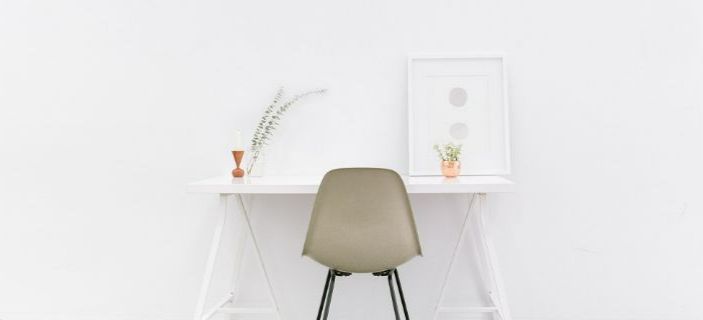
As spring arrives and the weather starts to get warmer, many people may begin to think about spring cleaning, airing out their home and decluttering so there’s space to enjoy. The minimalism trend is currently sweeping the nation, encouraging people to reduce the number of items they have in their life – perfect for this time of year.
In this blog we’ll look at what minimalism is, how it could help you declutter your home, and when it can sometimes go a little too far!
What is minimalism?
Unlike what many think, minimalism doesn’t have to be about sacrificing your home comforts and living in an empty house or out of a backpack. According to The Minimalists, minimalism is instead about finding freedom from clutter and the ‘trappings of the consumer culture we’ve built our lives around’ so that we can really appreciate our surroundings and our time.
Minimalism can help benefit your life in a number of different ways, from giving you space to breathe, to giving you more energy and money in your pocket to spend on things you truly need that will spark joy in your life. By decluttering and removing unnecessary items from your home, you’ll be given more space to appreciate and enjoy without feeling crowded.
How can you embrace minimalism?
If you’re still hesitant about minimalism, and don’t want to do too much or make too many big changes quickly, a great resource would be Marie Kondo’s KonMari decluttering method. In her book, The Life-Changing Magic of Tidying Up, she promotes the Japanese method of cleaning up called KonMari, which focuses on simplifying, organising or storing.
Her key message is to only keep things in your life that spark joy, so maybe start with a wardrobe or singular room and get rid of anything in the room that doesn’t spark joy in your life. Obviously, this can’t apply to everything, since there are some items that must be considered necessary (you can decide what those are) but by being aware of what you possess, you can focus on what you enjoy instead of what you’re keeping out of habit or no longer need.
The best way to do this, if you’re starting with a single room, is to write down everything in the room in a list, highlight the things you don’t use or don’t need, and consider donating or selling those items. Whenever you come to buy something new, you’ll have your lists to refer to and can see whether you really need it or if you can live freely without it.
Minimalism doesn’t just have to focus on decluttering and rearranging your home, you can also practice minimalism through your diet by focusing on what you eat, staying healthy and being minimalistic in how much waste you produce, such as plastic packaging or thrown-away food.
When does minimalism become extreme?
In some cases, people can take minimalism to the next level. Andrew Hyde, self-described “minimalist, writer, bootstrapper, designer, user interface builder, user experience creator, buzzword originator, blogger, politico, biker, runner, backpacker and nice guy” gave up his job in 2010 and travelled around the world, having sold all but 15 of his possessions.
His entire life can be carried around in one orange Arc’teryx Miura 30 backpack, containing a total of 7 items of clothing, not including underwear, and 7 personal items. His definition for possessions, in terms of categorising what he owns, comes under “resellable items [he] would be [annoyed] if someone took”.
While this is definitely a dramatic case, it does raise an interesting perspective on practicing minimalism. Andrew Hyde states that “Once you get used to simplicity, the complex normality others have becomes the audacious thing.” Minimalism may be a large project to look at, but once you’ve changed your processes and embraced simpler living, it may seem strange to look back at how you used to live.
If you’re thinking about decluttering or going further and embracing more extreme versions of minimalism, it’s often a good idea to work in stages. Why not put items you’re not sure about getting rid of into a self-storage unit and, if you don’t need it or want it for a month, you know that you can get rid of it.